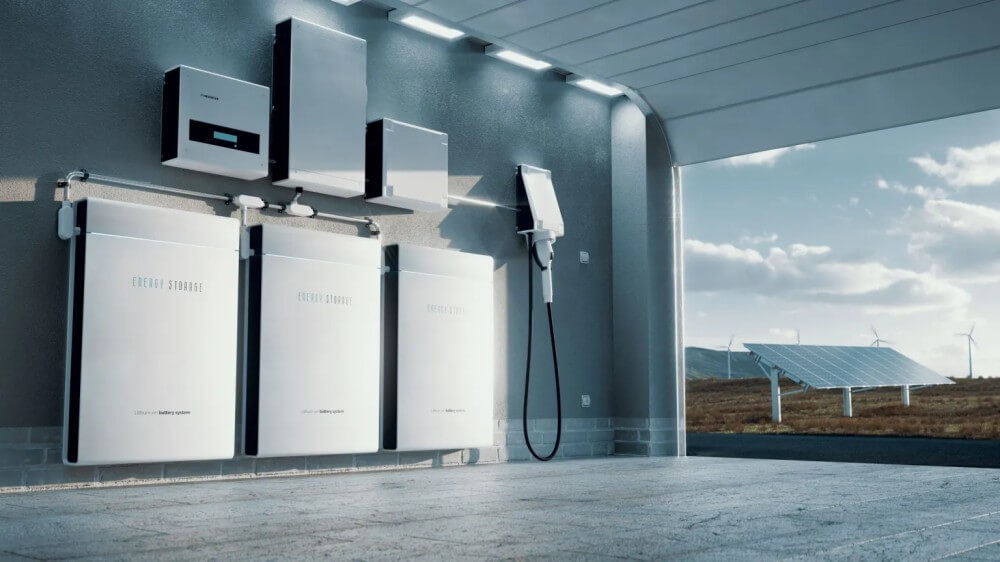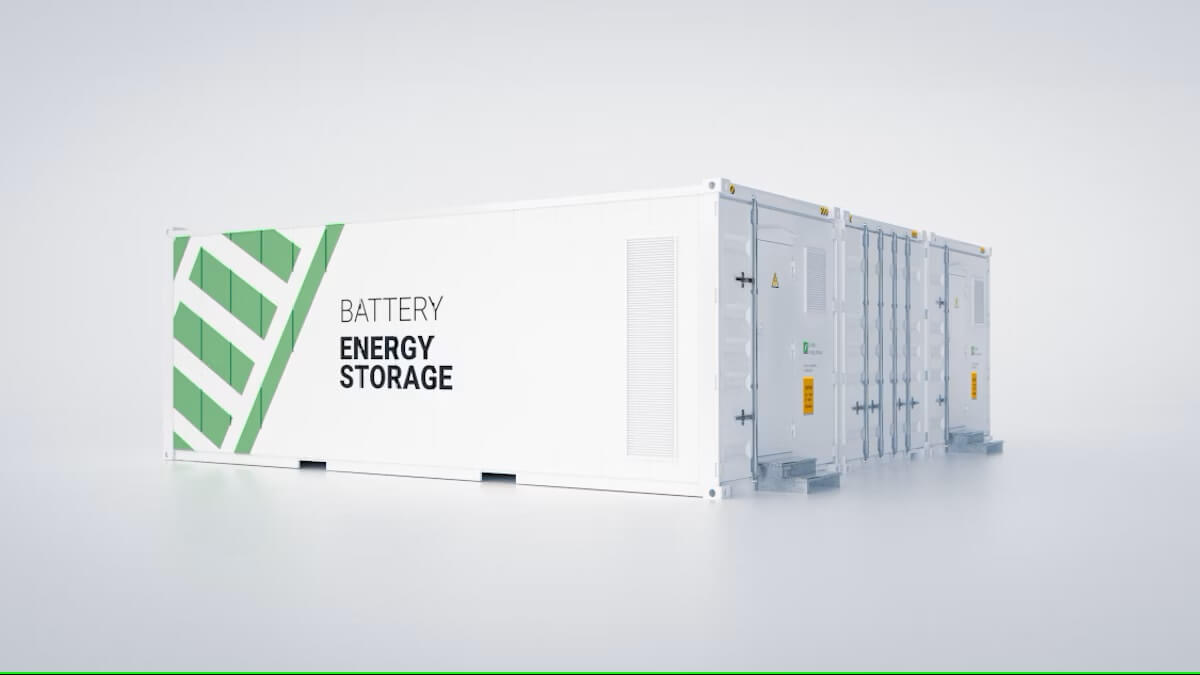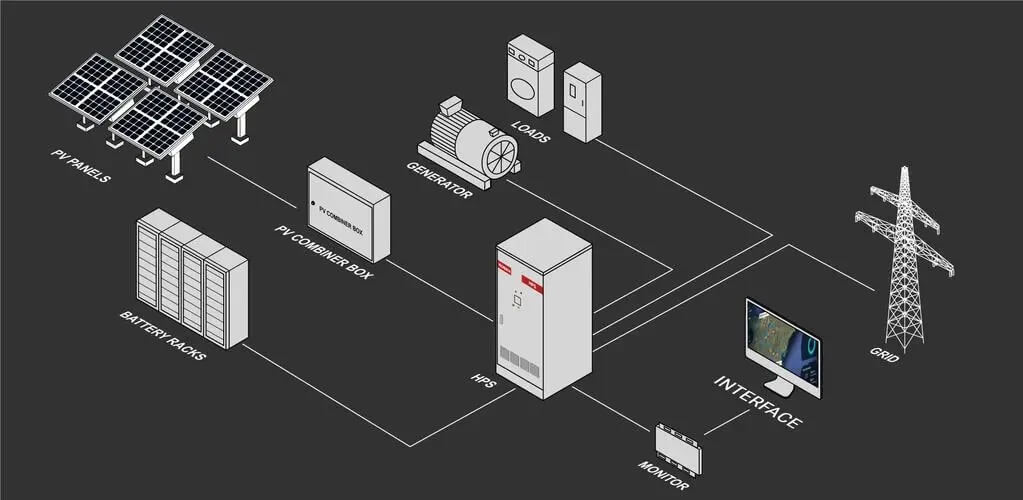Overview of Battery Energy Storage Systems
As the world uses more green energy sources like solar and wind, one of the biggest problems is how to store the energy they produce. This is where systems that store energy in batteries come in.
In this piece, we'll look at battery energy storage systems in more detail. We'll talk about how they work, the different types of batteries they use, where they can be used, their pros and cons, and their future potential.

Introduction
As the name suggests, battery storage systems use batteries to store electricity for later use. They work by putting energy into the batteries when there is more energy than is needed, like when solar panels make more energy than is used, and taking energy out of the batteries when the energy is needed, like when the sun isn't out or during peak hours.
More and more people are using battery energy storage systems to make green energy more stable and flexible.
Different kinds of battery energy storage systems
In battery energy storage systems, different kinds of batteries are used, and each has its own pros and cons. Some of the most popular types are:
1. Most household gadgets and electric cars use lithium-ion batteries. They are small and light, have a high energy density, and can be used and refilled many times without losing much of their capacity.
2. Lead-acid batteries: These are the oldest kind of battery, and cars and boats still use them a lot. They are expensive and stable, but they are also large, have a low energy density, and need to be maintained.
3.Flow batteries use a liquid solution that is kept in a tank and moved through the cell while it is being charged or discharged. They last a long time, are easy to scale up, and work well for storing energy on a large scale.
4.Sodium-sulfur batteries: The materials in these batteries are liquid sodium and sulphur, and they are mostly used to store energy on a large scale. They are very efficient and have a high energy density, but they must be run at high temperatures and cost a lot.

Battery Energy Storage System Design
When making a battery energy storage system (BESS), there are a few important things to keep in mind:
Energy storage capacity: The first step in making a BESS is to figure out how much energy it needs to store. This will depend on the application and how much backup power is needed. For example, a home BESS may need 5–20 kWh of capacity, while a utility-scale BESS may need hundreds of megawatt-hours (MWh) of capacity.
Power Output: Another important factor is the BESS's power output, which shows how much energy can be sent to the load at any particular time. The power output should be enough to meet the load's peak power needs and should be scalable so that it can keep up with future demand growth.
Battery Technology: The type of battery you choose depends on a number of things, such as the purpose, the amount of energy you need, and how long you want the battery to last. Due to their high energy density, long cycle life, and low upkeep needs, lithium-ion batteries are the most popular choice for BESS uses right now.
Control System: A control system is needed to handle how the battery is charged and discharged and to keep track of its state of charge and other important factors. The control system should also have safety features to keep the battery from being overcharged, overdischarged, or causing other problems.
Inverter: An inverter is needed to change the DC power in the battery into AC power that the load can use. The inverter should be chosen based on how much power the BESS can put out and how much voltage and frequency the load needs.
Cage: The BESS should be put in a waterproof and secure cage to keep the batteries and other parts safe from the weather and people who don't have permission to be there.
Installation and Maintenance: Finally, the BESS should be set up by a trained professional who knows the needs of the application. Maintenance is also needed to keep the device safe and working well for a long time.
In short, when building a battery energy storage system, you need to pay close attention to a number of important factors, such as the energy storage capacity, the power output, the battery technology, the control systems, the inverters, the enclosures, installation, and upkeep. By taking these things into account, designers can make a BESS that fits the needs of the application and offers solid backup power when it is most needed.

Parts of a Battery Energy Storage System (BESS)
The Battery Energy Storage System (BESS) is made up of several parts. Here are short explanations of some of the most important parts:
Battery Pack: The battery pack is the most important part of the BESS. It is made up of many battery cells that can store a lot of energy. At the moment, lithium-ion batteries are the most common type of battery. However, there are also sodium-ion, lead-acid, and flow batteries that can be used in different situations.
Control System: The control system is the brain of the BESS. It keeps track of how the battery is charging and draining so that the BESS is always in good shape. The control system can also be connected to other systems, like the smart grid, to help keep the grid running smoothly.
Inverter: The inverter is the most important part that changes the DC power from the BESS into AC power that the load can use. It controls the voltage and frequency of the output and regulates the power quality to make sure that the power provided is the same as the power on the network.
Sensors and Monitoring Devices: Sensors and monitoring devices are used to check the performance and state of the BESS and give parameters like battery charge, temperature, current, and voltage. These devices help workers find problems and do repair on time so that the BESS will work well for a long time.
Enclosure: A BESS's enclosure is usually a sealed metal box or case that keeps the weather and other external factors from getting to the battery pack and other parts. For the BESS to work safely, the container should also have safety features like fire and blast protection.
Cables and connectors: Cables and connectors are used to link the BESS to other tools or loads. To make sure that electricity is delivered safely and reliably, these parts need to have the right current and voltage values.
Extra equipment: Extra equipment includes things like cooling systems, battery holders, wire trays, and other parts and tools for the BESS. These devices can be chosen based on the unique needs of the programme.
In short, BESS parts include battery packs, control systems, generators, sensors and monitoring devices, enclosures, wires and plugs, and other equipment. To make a BESS system that works well and is effective, designers need to think carefully about how to choose and combine each part.
How a battery energy storage method is used
Energy storage systems that use batteries can be used in a lot of different ways, from small home systems to huge systems that power the whole grid. Some of the most popular uses are:
1.Residential energy storage: Homeowners can use battery storage systems to store extra solar energy during the day and use it at night.
2.Storing energy for business and industry: Battery storage systems can be used for business and industry, like storing extra solar energy to use at night or easing the load on the grid during busy hours.
3.Backup power in case of an emergency: Energy storage systems that use batteries can be used as backup power in case of an emergency.
4.Transportation: A lot of electric vehicles use devices that store energy in batteries to power the cars.
Advantages and drawbacks of battery energy storage systems
Some of the benefits of energy storage systems with batteries are:
1. Renewable energy sources that are more reliable and flexible. Battery storage systems make renewable energy sources more reliable and flexible because they can store and release energy when it is needed.
2. Lower energy costs: Battery storage systems make people less reliant on standard oil-fired power sources, which lowers the cost of energy.
3.Reduce your carbon footprint: Using green energy sources and battery storage solutions can help reduce your carbon footprint and fight climate change.
There are some problems with battery energy storing methods, such as:
Cost: Battery storage solutions are still pretty expensive, which makes them impractical for some uses.
Safety: Energy storage systems that use batteries can catch fire or blow up if they are not used correctly.
Impact on the environment: Batteries contain dangerous chemicals that can hurt the environment if they aren't taken care of properly, and making them can have a big effect on the environment.

The Future of Battery Storage System
Even though there are problems, the future looks good for battery energy storage systems. As battery technology keeps getting better, we can expect battery storage systems to get cheaper, last longer, and hold more energy. This will make energy storage systems like batteries more stable and efficient, which will make green energy more practical.
Battery storage systems could also change the energy business by making it possible to store energy on a large scale. This will help us balance the supply and demand for energy and lower the need for fossil fuels.
Conclusion
Batterie energy storage system are a very important part of the future of energy. They make renewable energy more stable and flexible by letting us store energy from green sources and use it when we need it. Even though there are still problems, it is clear that battery storage devices have many benefits. We can expect more improved battery storage technologies in the future. These technologies will make battery storage systems more reliable, efficient, and useful in more situations. At the same time, we also need to think about how much battery energy storage systems cost, how safe they are, and how they affect the environment. We need to take steps to solve these problems in order to help the growth and use of battery energy storage technology.


